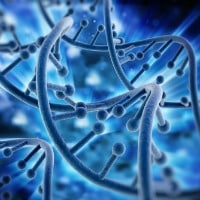Researcher Grant Trobridge, an associate professor of pharmacy at Washington State University Spokane, and his team have developed a method to reduce the development of cancer cells that present an infrequent but dangerous gene therapy byproduct.They have changed the way a virus carries a beneficial gene to its target cell. A target cell is an abnormal red blood cell with a dark center surrounded by a light band encircled by a darker ring, all resembling a shooting target, which gives it its name. The modified viral vectors can be used for blood diseases, and they reduce cancer risks.
Gene therapy has the potential to treat genetic diseases by replacing the defective genes with ones that have been repaired. Although showing promise in clinical trials, there have been setbacks and difficulties in the delivery of the genes, getting them to work for a long period, and some safety issues.
Trobridge‘s team is targeting a newborn’s immunodeficiency called SCID-X1 or “Boy in the Bubble Syndrome,” which is life-threatening. The goal is to develop an effective and safe therapy for SCID-X patients. The team has developed a vector from a foamy retrovirus, which got its name because it seems to foam in some situations. It doesn’t usually infect humans like other retroviruses and is less prone to activate nearby genes, especially those genes that may cause cancer. Retroviruses are a good choice for gene therapy, because their genes are inserted into the genome of the host.
Hoping to make a safer vector, the team changed its interaction with the target stem cell to make it insert itself into a genome’s safer parts. It integrated less near potential cancer-causing genes. Trobridge predicts that this therapy could be ready for clinical trials within the next five years.




